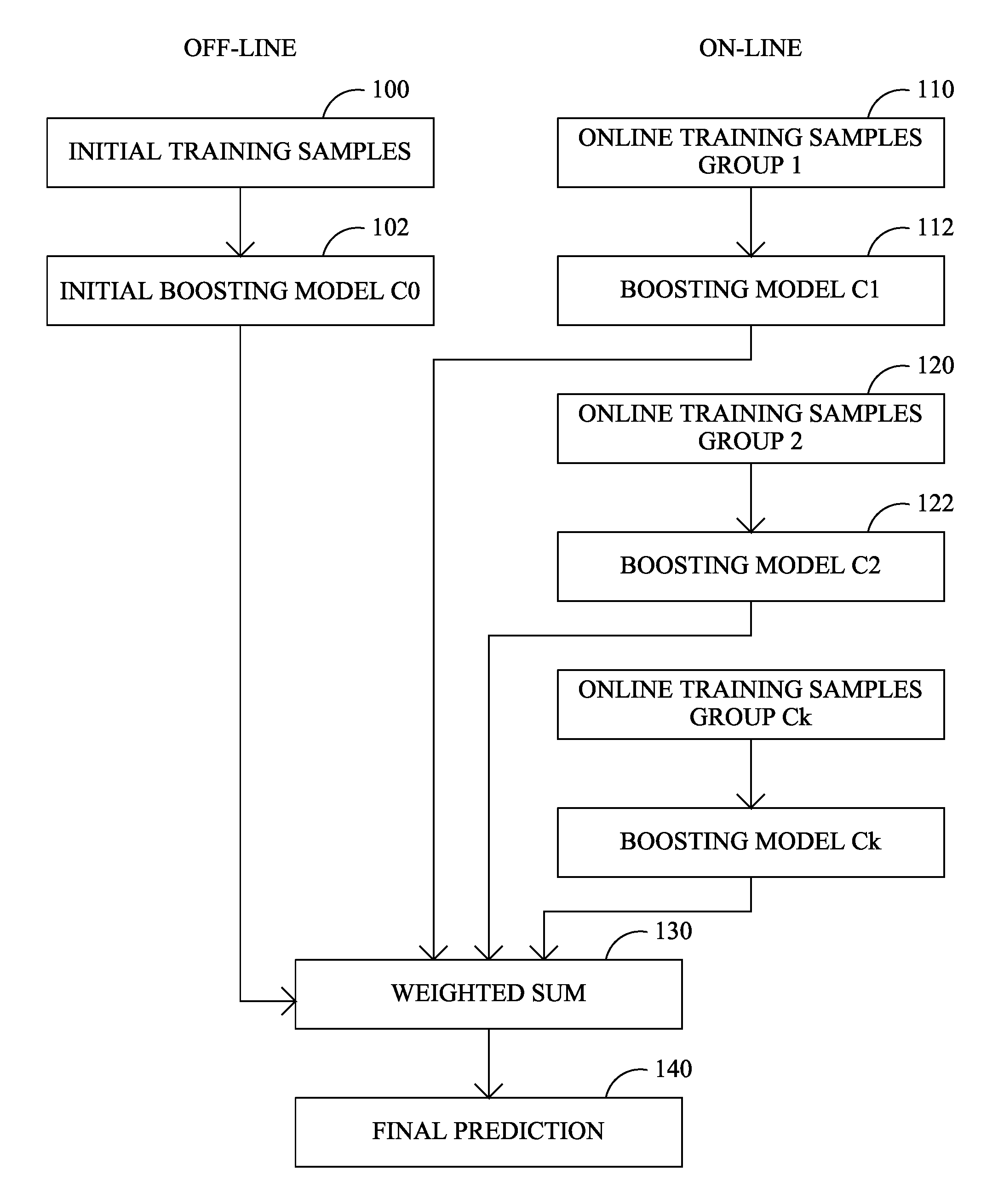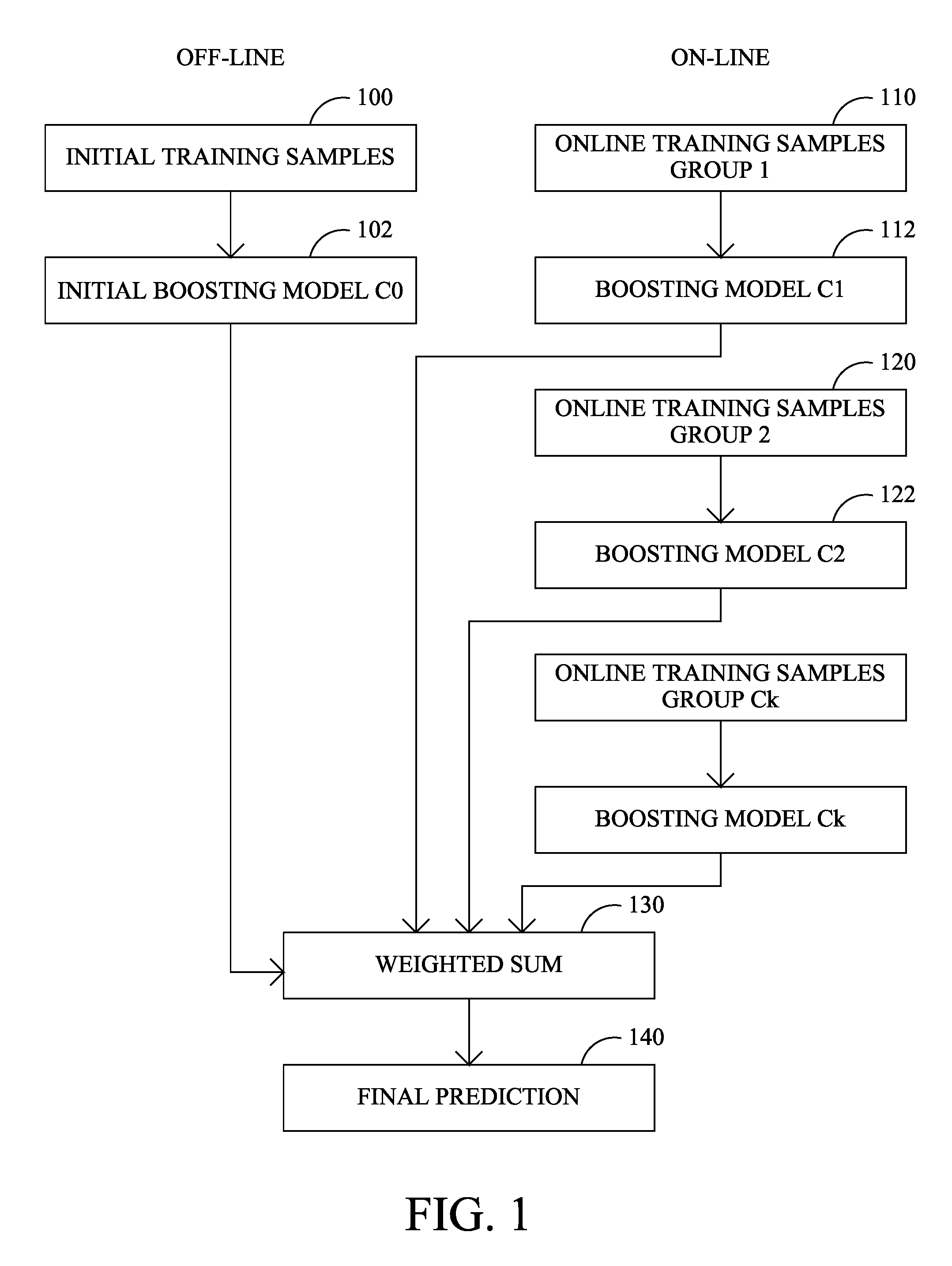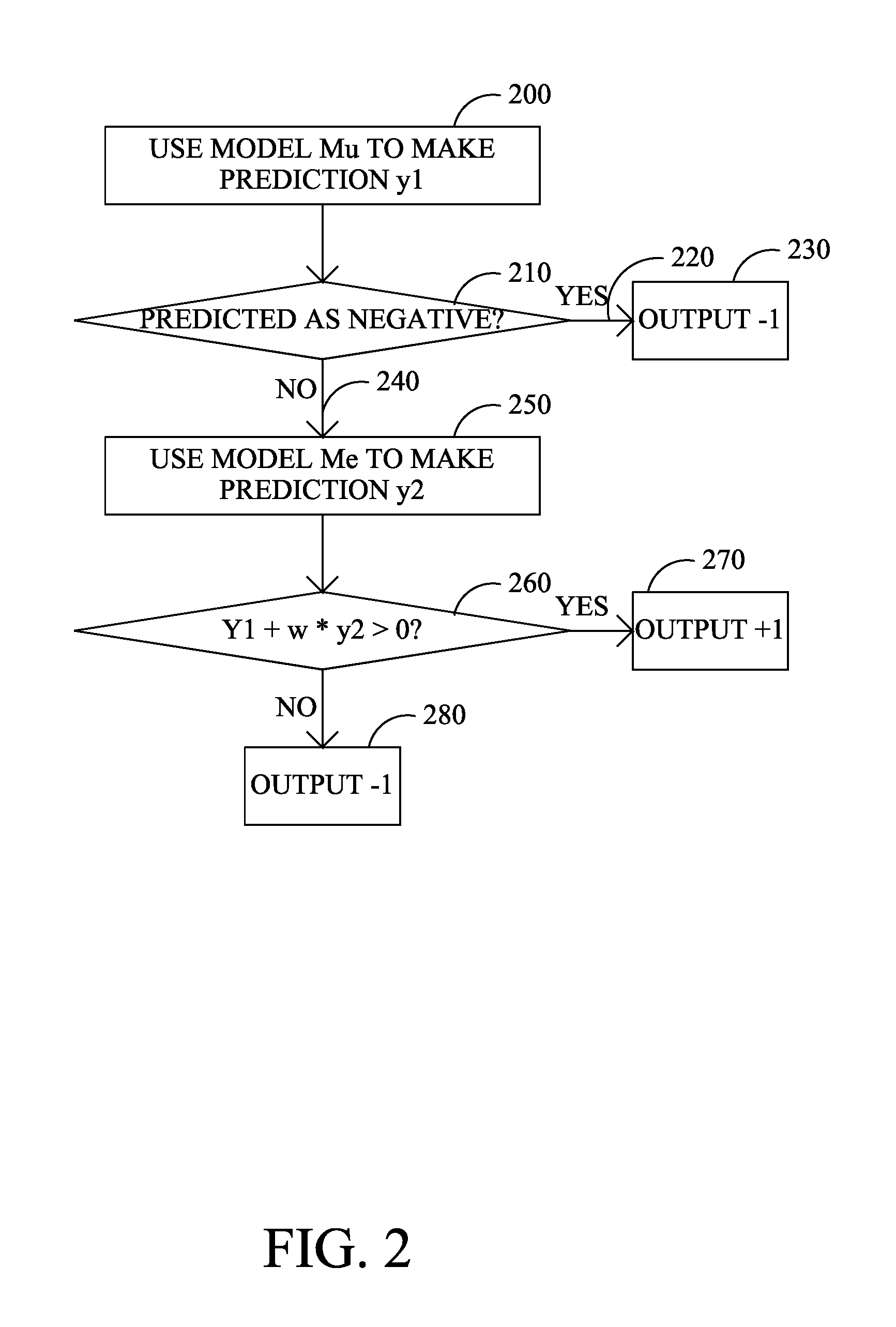Supervised and semi-supervised online boosting algorithm in machine learning framework
a machine learning framework and algorithm technology, applied in the field of online learning of a classifier, can solve the problems of not all training samples available, become useless, and the re-training from scratch will usually be time-consuming and time-consuming
- Summary
- Abstract
- Description
- Claims
- Application Information
AI Technical Summary
Problems solved by technology
Method used
Image
Examples
Embodiment Construction
[0020]The boosting technique may supplement the training on an image by image basis, or group of images by group of images basis, by expanding the model. Suppose with the batch of initial training samples, an ensemble of weak classifiers has already been obtained, then this ensemble can be expanded to a larger one as new training samples arrive. With the initial training samples, a model C0, which is an ensemble of weak classifiers Li0, i=1, . . . M, is trained. The prediction of C0 on a testing sample x may be made by a weighted combination of the prediction of each weak classifier:
C0(x)=∑i=1Mwi0Li0(x),
in which wi0, i=1, . . . M are the weights of each classifier. The label of sample x may be given by sgn[C0(x)], which is the sign of the output.
[0021]In the online stage, the new training samples are collected and stored until there are a sufficient number of samples to effectively train another new model. The model trained by the i-th group of samples may be denoted as Ci, which is...
PUM
 Login to View More
Login to View More Abstract
Description
Claims
Application Information
 Login to View More
Login to View More - R&D
- Intellectual Property
- Life Sciences
- Materials
- Tech Scout
- Unparalleled Data Quality
- Higher Quality Content
- 60% Fewer Hallucinations
Browse by: Latest US Patents, China's latest patents, Technical Efficacy Thesaurus, Application Domain, Technology Topic, Popular Technical Reports.
© 2025 PatSnap. All rights reserved.Legal|Privacy policy|Modern Slavery Act Transparency Statement|Sitemap|About US| Contact US: help@patsnap.com



